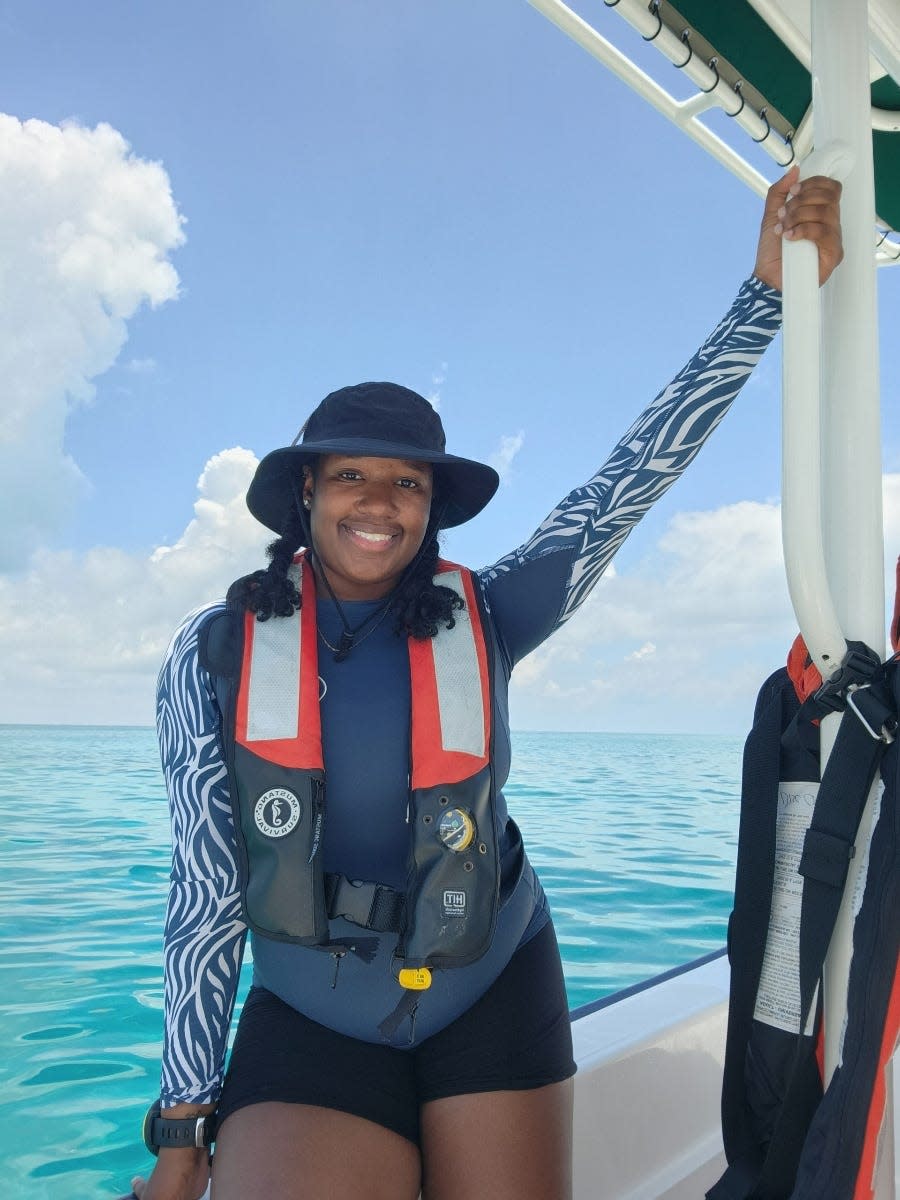UWF digs into Apalachicola history for clues to Pensacola's past
Archaeologists with the University of West Florida will be part of a project that digs into Florida’s past and aims to learn more about just how far people enslaved in Pensacola went to be free.
UWF graduate student, Bria Brooks is part of the project.
Originally from Memphis, Tennessee, Brooks moved to Pensacola when she was selected to be senior intern for Florida Public Archaeology Network, a statewide program based out of UWF.
She was also offered the opportunity to join the archaeology program at UWF where she is majoring in both anthropology and underwater archaeology.
Brooks and FPAN Public Archaeologist Nicole Grinnan, who is also a UWF graduate, are heading to Apalachicola this fall to begin exploring the area’s historical sites and diverse cultural heritage.
Digging it: Photos: UWF archaeologists uncover Pensacola's long and rich history

Escaping Enslavement
It’s a region that has been relatively unexplored until now and includes Prospect Bluff, a historical site on the Apalachicola River in Apalachicola National Forest. It was here, around 1814–1816, that the British and a group of maroons, or fugitive slaves, established a fort to fight the Americans.
Many of the maroons escaped slavery in Pensacola to make a stand in Apalachicola and fight for their freedom against those who would keep them bound.
“They were told that if you come fight for the British, you'll be granted citizenship in Britain later and receive passes to Britain and freedom when you get there,” Brooks explained. “They ended up holding up a fort called Negro Fort. It was documented historically as Negro Fort and, also called Prospect Bluff, so maroons from Pensacola actually established a fort in Apalachicola, Florida.”
Pensacola history: UWF archaeology students explore Civil War history in Chimney Park dig
Brooks will be paying extra attention to the site at Prospect Bluff since her thesis focuses on the descendants of the transatlantic slave trade and American slavery.
As a descendant of the slave trade herself and a Black woman in a field where that isn’t common, Brooks is excited to be a part of the project. She had never heard of Prospect Bluff or its history before this study.
“To be able to tell these stories is personal to me, and also to highlight history that's not being told and that has honestly, intentionally been swept under the rug,” said Brooks. “I think it's holistic parts of history is what I'm really hoping to show because sometimes maroonage, especially maroons here in the Americas, is not talked about at all.”
Sharing Findings
The project will be funded with a $99,968 grant the Florida Public Archaeology Network received from the National Oceanic and Atmospheric Administration’s National Estuarine Research Reserve System Science Collaborative.
The archaeologists will not only be studying historical sites and artifacts they may uncover, but they’ll also be talking to people in the small community – some of whom are also descendants of the transatlantic slave trade – about what they find.
The goal is to engage the people who live and work there in the project. The team hopes they can learn from each other about the area and their heritage and help determine what they want to conserve, especially as climate change and human activity threaten historical sites.
“They really wanted to get some archaeologists and cultural resources people out there to look at the sites they have," Grinnan said, “but also to talk to the community about how they value the sites that are located within the reserve so that going forward as they plan human resources, financial resources for research or mitigation in the face of climate impact or interpretive programs on that, they would have a lot of community support.”
The project will last about a year and starts in October.
Diving into the past
Brooks, who is also working on a thesis in underwater archaeology, hopes to do an underwater survey along the Apalachicola River.
The FPAN team will not only share the project's findings with the community, but also with the North Florida African American Corridor Project. It’s a nonprofit organization based in Apalachicola which aims to raise awareness and preserve African American history.
“It's perfect to be able to connect this story with people who own their heritage, who are the keepers of history, the people there that are invested in this story,” said Brooks.
Her own family is proud of her career choice and the diversity and perspective she brings to the work.
“They're just very proud and honored that their daughter is being able to highlight these type of stories that haven't been told before.”
This article originally appeared on Pensacola News Journal: UWF Florida Public Archaeology Network tracks Prospect Bluff history

